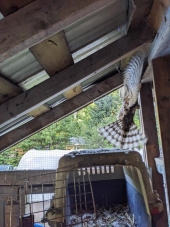
 2
2




3) Most carnivores have more offsprings than herbivores. This is striking that we see big packs of antilopes, zebras etc, and few predators, when you see antilopes with 1 young, and lions with maybe 4! Do they die more?

 2
2








Deb Stephens wrote:Are we more similar to predators than prey or vice versa?
Deb Stephens wrote:...why can't we seem to get our act together and control our own population explosion?




A human being should be able to change a diaper, plan an invasion, butcher a hog, conn a ship, design a building, write a sonnet, balance accounts, build a wall, set a bone, comfort the dying, take orders, give orders, cooperate, act alone, solve equations, analyze a new problem, pitch manure, program a computer, cook a tasty meal, fight efficiently, die gallantly. Specialization is for insects.
-Robert A. Heinlein
 1
1








"The rule of no realm is mine. But all worthy things that are in peril as the world now stands, these are my care. And for my part, I shall not wholly fail in my task if anything that passes through this night can still grow fairer or bear fruit and flower again in days to come. For I too am a steward. Did you not know?" Gandolf




 1
1




"The rule of no realm is mine. But all worthy things that are in peril as the world now stands, these are my care. And for my part, I shall not wholly fail in my task if anything that passes through this night can still grow fairer or bear fruit and flower again in days to come. For I too am a steward. Did you not know?" Gandolf








You can see with only one eye open, but you'll probably run into things and stub your toe. The big picture matters.





|
Yeah, but is it art? What do you think tiny ad?
The new gardening playing cards kickstarter is now live!
https://www.kickstarter.com/projects/paulwheaton/garden-cards
|





